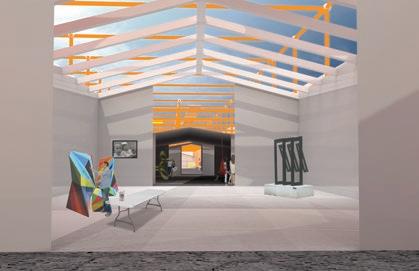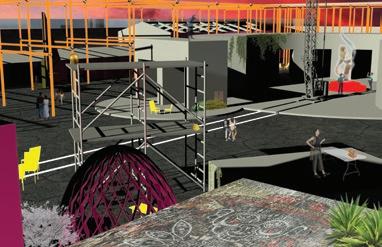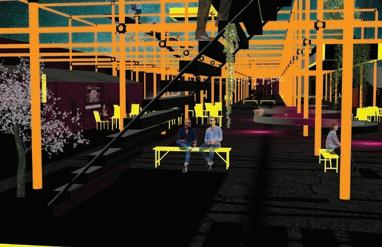
2 minute read
open museum
Individual Work - Rhino / Photoshop / Illustrator / GIF & Video Making
In an effort to learn about design at a foreign location in today’s a global culture, we attempted to perhaps create a methodology or a way of thinking. This studio focused on CDMX and designing a cultural program that can tie two neighborhoods from different socio-economical backgrounds. How can our objective yet ignorant eyes can curate an experience while leaving room for its people to give the program its final form, so the program can actually work and architects’ won’t yet again be the king builders?
Advertisement
I have chosen a museum as my typology, not only because the site is in need of a cultural space that will gather the various communities and emergent cultural programming together, but also act as an archive where they can express their identity through the creation of a ‘collective memory’.
Inspired by the definition of a novel modernism by Bourriaud, this museum loses its universal didactic nature and focuses on creating a frame that will then unite different singularities. And this is how the museum becomes an ecology, by losing its place at the top and being in constant exchange with its visitors. Through community created content, the museum allows the public to appropriate its spaces while also allow them to document their creations and leave a trace behind for future visitors to access. This creates a living atmosphere, a museum that lives in both past and present.
The best example of an open museum we saw in Mexico City was the Esculita de Emilio Zapato. By letting members of the community hang their family photos alongside of other valuable artists, they allowed the community to come together and created a collective memory.
Along Canal Nacionel, where our site is located, there are many fragmented communities and emergent bottom-to-top programs. This museum aims to facilitate this through creating a place of collective memory at the mouth of the canal and unifying these singularities to bridge the two neighborhoods.
In order to create the afore-mentioned ideological frame, I curated 5 Mexican artists who all worked against the didactic museum structure. Then, I utilized these artists’ visions to create a methodology that will shine a light on the process of achieving said collective memory on site.
Through this methodology of creating a Benjaminian ownership of a place, new meanings and narratives can be added to the site for diverse representation.
Helen
EMERGENCE
PARASITE
APPROPRIATION
PARTICIPATION
The program of the site is designed to be porous, informal and engaging. As this project aims to live in the present and the past, it cannot have a static nature. Thus, the existing crane on site is used for mobility and creation of different experiences at each visit and the grid structure, which is added to the existing buildings, provides flexibility of creation three dimensionally.

The entities that range from micro to macro and can be moved on site include pavilions designed by resident artists, chairs, planters, art pieces, etc. Overall, the site does not have one shape and evolves constantly with its visitors. The enrichment of the museum is caused by the gradual build up of the volatile culture.
The pavilions on site are created by the resident artists and can be moved around and the disassembled pieces are kept in piles for future use for either reassemble or creation of new pavilions, while the community created content can be 3D scanned at the photo studio for longevity and can be accessed as a hologram even after the content is physically destroyed. Thus visitors not only can create their own content but can also view the past visitor’s content, hence creating a connection. The site also includes elevated walkways and gardens, artist residences, a sculpture garden, a restaurant, a café, and a bookstore.






